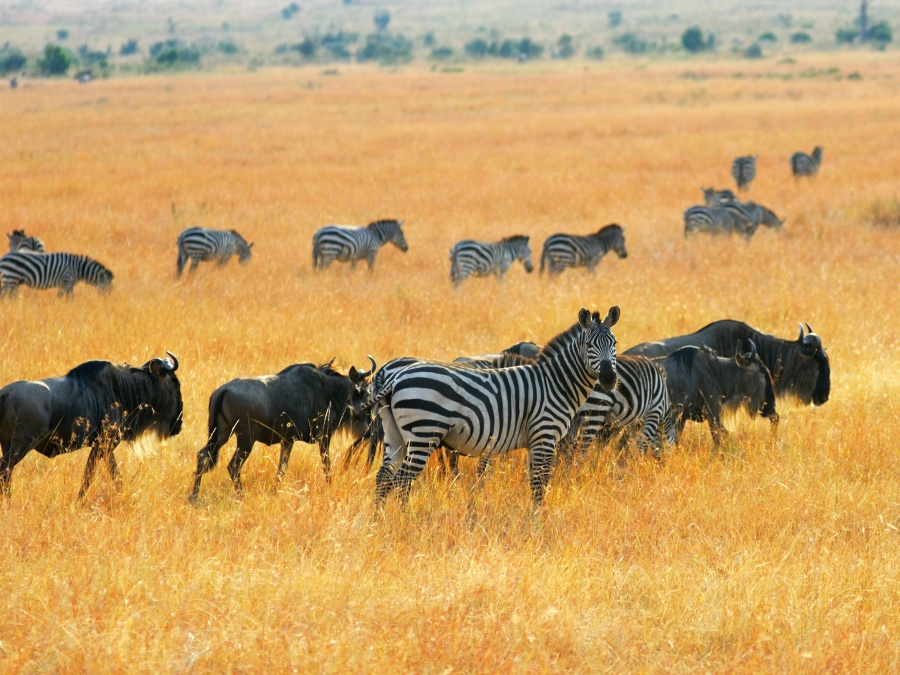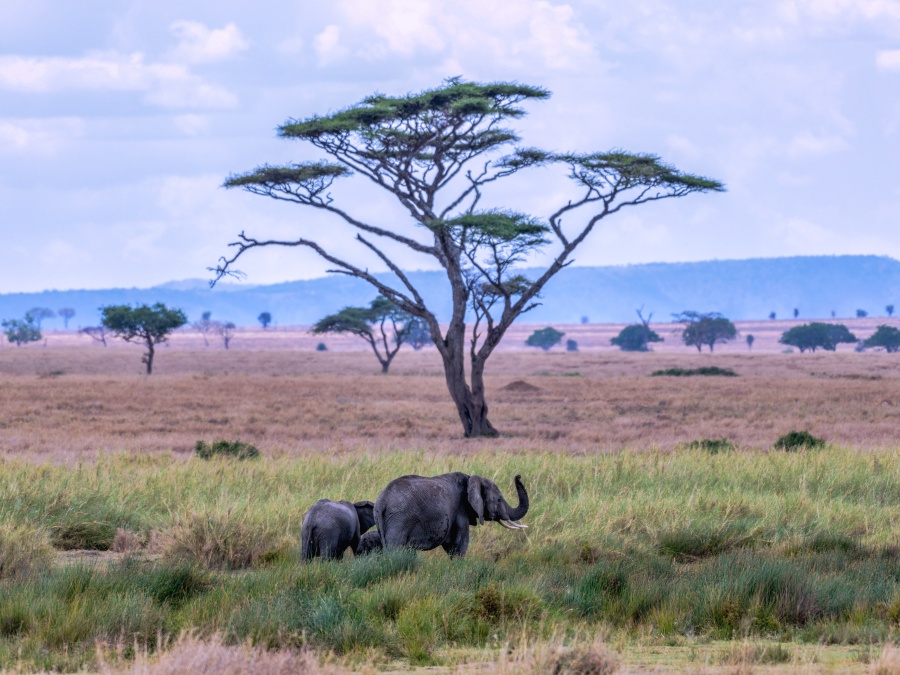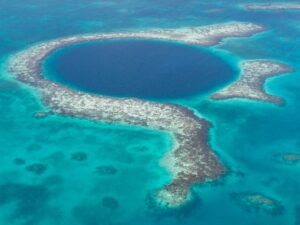
On the vast African continent, where wildlife reigns supreme, lie two of the most iconic destinations for nature lovers and adventurers: the Serengeti National Park in Tanzania and the Masai Mara National Reserve in Kenya.
These wildlife sanctuaries offer a unique and unforgettable experience: a safari that awakens all the senses and immerses you in the pristine beauty of the African wilderness.
The Serengeti and Masai Mara are famous for their incredible diversity of wildlife, including “Big Five” (lion, leopard, elephant, buffalo and rhinoceros)as well as the spectacular annual migration of wildebeest and zebra (yes, like that of the Lion King).
This natural phenomenon, known as the Great Migration, is one of nature’s greatest spectacles, where millions of animals cross the vast plains in search of fresh grass and water.

Safari in the Serengeti and Masai Mara
A safari in the Serengeti and Masai Mara is a unique adventure that allows you to explore wildlife in its natural habitat.
From exciting 4×4 safaris to guided bushwalks, there are a variety of options to discover the rich biodiversity and natural beauty of these national parks.
When to go?
During the low season, which runs from March to May, the rainy weather and heavy rainfall make it not the ideal time for safaris. Although accommodations usually offer lower prices, the fewer safaris on offer and the difficulty in spotting animals in the parks can make this time of year less attractive. During this season, it is also not possible to carry out some hiking activities.
The shoulder season, which includes the months of November and December, offers more affordable prices for accommodation, although it is necessary to book in advance to guarantee availability and keep prices low. However, this time of year does not have as many fascinating attractions as the high season.

On the other hand, the high season coincides with the Great Migration, an impressive natural spectacle in which thousands of wildebeest, gazelles and zebras migrate from Tanzania to the Masai Mara in Kenya, during the months of June to August. This period is ideal to observe these migratory movements and enjoy the abundant fauna in the parks.
The start of the Great Migration in the opposite direction, when the animals return to Tanzania, takes place in January and February, making this time also the high season. In short, for those seeking the most rewarding experience on a Kenya safari, the peak season offers the best opportunities to witness the incredible diversity and movement of wildlife at its best.
How to get?
Serengeti National Park is located in northern Tanzania, while the Masai Mara National Reserve is in southwestern Kenya. Both parks are accessible from major cities and airports in both countries, and offer a variety of accommodation options, from luxurious lodges to traditional campsites.

Tips to make the most of your safari
- Plan ahead: Book your safari with a trusted company, check reviews from other travelers and verify the legality of the agency you choose, and make sure you have all the necessary travel documents, including visas and required vaccinations.
To know some details about entry requirements, visit the Traveler’s Guide of the Ministry of Foreign Affairs.
- Dress appropriately: Opt for comfortable clothing in neutral colors that blend with the environment. It is also important to bring sunscreen, insect repellent, and a hat to protect yourself from the sun.
- Keep an open mind: Prepare for unexpected experiences and keep an open mind to all that nature has to offer. Each safari is unique and can bring surprising wildlife encounters.
- Respect wildlife: Remember that you are visiting the home of these animals and try to minimize your impact on their environment. Follow your guide’s instructions and respect park rules at all times.
- Enjoy the moment: Take time to absorb the beauty and tranquility of African nature. Disconnect from the outside world and immerse yourself in the magic of the Serengeti and Masai Mara.
Source: https://alanxelmundo.com/como-ver-la-gran-migracion-de-nus-y-cebras-en-africa/?utm_source=rss&utm_medium=rss&utm_campaign=como-ver-la-gran-migracion-de-nus-y-cebras-en-africa

